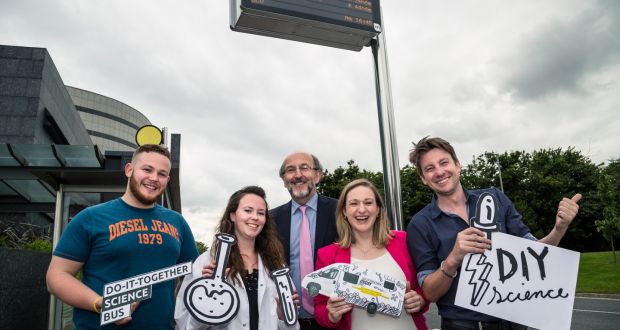-
A flower is seen in the foreground with a Soyuz rocket on the launch pad at the Baikonur Cosmodrome in Kazakhstan on April 7, 2025. Expedition 73 crewmembers including NASA astronaut Jonny Kim launched aboard their Soyuz MS-27 spacecraft on April 8.
-
The perfectly picturesque spiral galaxy known as Messier 81, or M81, looks sharp in this composite from NASA's Spitzer and Hubble Space Telescopes and NASA's Galaxy Evolution Explorer.
-
NASA’s X-59 quiet supersonic research aircraft is seen during its “aluminum bird” systems testing at Lockheed Martin’s Skunk Works facility in Palmdale, California. The test verified how the aircraft’s hardware and software work together, responding to pilot inputs and handling injected system failures.
-
The NASA "meatball" logo mounted on the south side of the Flight Research Building at NASA's Glenn Research Center in Cleveland, as seen through foliage.
-
Cassiopeia A (Cas A) is a supernova remnant located about 11,000 light-years from Earth in the constellation
Cassiopeia. It spans approximately 10 light-years.
-
A NASA spacesuit glove designed for use during spacewalks on the International Space Station is prepared for thermal vacuum testing inside a one-of-a-kind chamber called CITADEL (Cryogenic Ice Testing, Acquisition Development, and Excavation Laboratory) at NASA’s Jet Propulsion Laboratory in Southern California on Nov. 1, 2023.
-
NASA astronauts Jim Lovell, Fred Haise, and Jack Swigert launch aboard the Apollo 13 spacecraft from NASA’s Kennedy Space Center in Florida on April 11, 1970.
-
On May 19th, 2005, NASA's Mars Exploration Rover Spirit captured this stunning view as the Sun sank below the rim of Gusev crater on Mars. This panoramic camera mosaic was taken around 6:07 in the evening of the rover's 489th Martian day, or sol.
-
NASA's SPHEREx mission is observing the entire sky in 102 infrared colors, or wavelengths of light not visible to the human eye. This image shows a section of sky in one wavelength (3.29 microns), revealing a cloud of dust made of a molecule similar to soot or smoke.
-
Astronaut Ronald E. McNair, STS-41B mission specialist, used some of his off-duty time aboard the space shuttle Challenger to play his saxophone.
-
The Cygnus Loop (also known as the Veil Nebula) is a supernova remnant, the remains of the explosive death of a massive star.
-
The sun's glint beams off a partly cloudy Atlantic Ocean just after sunrise as the International Space Station orbited 263 miles above on March 5, 2025.
-
The space shuttle Discovery launches from NASA's Kennedy Space Center in Florida, heading through Atlantic skies toward its 51-D mission. The seven-member crew lifted off at 8:59 a.m. ET, April 12, 1985.
-
A scrub jay perches on a branch near the Vehicle Assembly Building at NASA’s Kennedy Space Center in Florida on June 22, 2020.
-
This new image showcases the dazzling young star cluster NGC 346. Although both the James Webb Space Telescope and the Hubble Space Telescope have released images of NGC 346 previously, this image includes new data and is the first to combine Hubble observations made at infrared, optical, and ultraviolet wavelengths into an intricately detailed view of this vibrant star-forming factory.
-
Webb has found crystalline water ice in a debris disk around a young, Sun-like star called HD 181327. Based on its presence in our own solar system, scientists have expected to see it in other star systems — but haven't had sensitive enough instruments to provide definitive proof until now.
-
Dr. Nancy Grace Roman, NASA's first Chief of Astronomy, briefs Astronaut Edwin "Buzz" Aldrin on celestial objects in 1965 in Washington, D.C.
-
NASA astronaut and Expedition 72 flight engineer Anne McClain is pictured near one of the International Space Station's main solar arrays during a spacewalk to upgrade the orbital outpost's power generation system and relocate a communications antenna.
-
The asteroid Donaldjohanson as seen by the Lucy Long-Range Reconnaissance Imager (L’LORRI). This is one of the most detailed images returned by NASA’s Lucy spacecraft during its flyby. This image was taken at 1:51 p.m. EDT (17:51 UTC), April 20, 2025, near closest approach, from a range of approximately 660 miles (1,100 km). The spacecraft’s closest approach distance was 600...
-
NASA's Perseverance rover captured this view of Deimos, the smaller of Mars' two moons, shining in the sky at 4:27 a.m. local time on March 1, 2025, the 1,433rd Martian day, or sol, of the mission.
-
Astronaut Don Pettit took this nighttime photo while the International Space Station orbited near the Andaman Sea in Southeast Asia.
-
JunoCam, the visible light imager aboard NASA's Juno, captured this view of Jupiter's northern high latitudes during the spacecraft's 69th flyby of the giant planet on Jan. 28, 2025. Jupiter's belts and zones stand out in this enhanced color rendition, along with the turbulence along their edges caused by winds going in different directions.
-
Students from the University of Massachusetts Amherst team carry their high-powered rocket toward the launch pad at NASA’s 2025 Student Launch launch day competition in Toney, Alabama, on April 4, 2025.
-
This NASA/ESA Hubble Space Telescope image features a peculiar spiral galaxy called Arp 184 or NGC 1961.
-
This NASA/ESA Hubble Space Telescope image features the spiral galaxy Messier 77, also known as the Squid Galaxy.
-
This NASA/ESA Hubble Space Telescope image features the globular cluster Messier 72 (M72).
-
This towering structure of billowing gas and dark, obscuring dust might only be a small portion of the Eagle Nebula, but it is no less majestic in appearance for it. 9.5 light-years tall and 7000 light-years distant from Earth, this dusty sculpture is refreshed with the use of new processing techniques.
-
The Soyuz MS-26 spacecraft is pictured backing away from the International Space Station shortly after undocking from the Rassvet module on April 19, 2025.
The Soyuz crew ship would parachute to a landing in Kazakhstan about three hours later returning NASA astronaut Don Pettit and Roscosmos cosmonauts Alexey Ovchinin and Ivan Vagner back to Earth after a 220-day space research...
-
NASA’s James Webb Space Telescope has taken the most detailed image of planetary nebula NGC 1514 to date thanks to its unique mid-infrared observations. Webb shows its rings as intricate clumps of dust. It’s also easier to see holes punched through the bright pink central region.
-
On March 18, 2025, NASA’s IMAP (Interstellar Mapping and Acceleration Probe) arrived at NASA’s Marshall Space Flight Center in Huntsville, Alabama, for thermal vacuum testing at the X-ray and Cryogenic Facility (XRCF), which simulates the harsh conditions of space.









